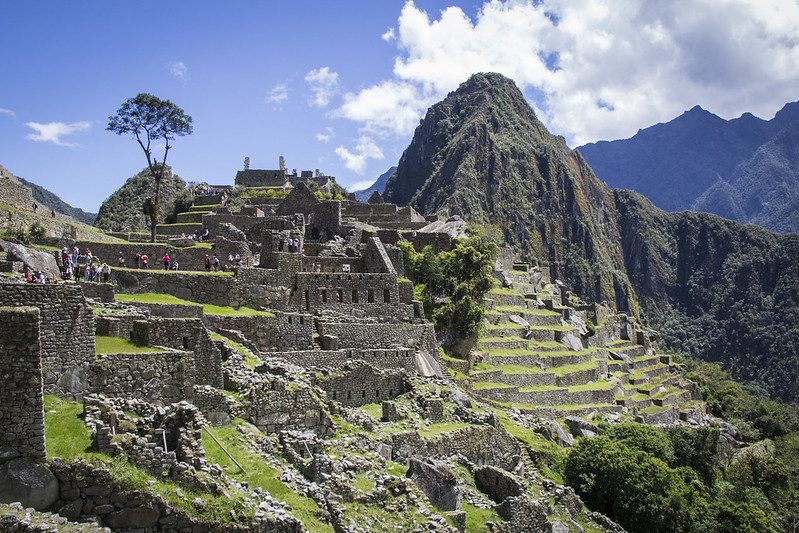Introduction: The Enigmatic Legacy of Machu Picchu
Machu Picchu, the world-renowned archaeological treasure located in the heart of the Andes, is not just one of Peru’s top tourist destinations but also one of the most awe-inspiring sites on Earth. Referred to as “Machu Picchu Machu Picchu” in some searches, the citadel is a symbol of the Inca civilization’s architectural and astronomical genius. Hidden for centuries and now a major bucket-list destination, Peru Machu Picchu attracts travelers, historians, and adventurers alike who seek to uncover the mysteries of this ancient site.
Where is Peru Machu Picchu?
Geographic Location
Machu Picchu is situated in the southern region of Peru, in the Cusco Region, Urubamba Province. Specifically, it lies in the Machupicchu District within the Sacred Valley of the Incas. Nestled at the edge of the Amazon rainforest and the Andes Mountains, it overlooks the Urubamba River and is enveloped by lush green peaks.

How to Get There
- By Train: The most common way to reach Machu Picchu is via a scenic train ride from Cusco or Ollantaytambo to Aguas Calientes, the town closest to the site.
- By Trekking: For the adventurous, several trekking routes are available including the iconic Inca Trail, the Salkantay Trek, and the Lares Trek.
Altitude of Peru Machu Picchu: What to Expect
Peru Machu Picchu Altitude Overview
The altitude of Peru Machu Picchu is approximately 2,430 meters (7,970 feet) above sea level. While lower than Cusco (which sits at 3,399 meters), it can still affect visitors not acclimatized to high elevations.
Altitude Considerations
- Symptoms: Mild altitude sickness can include headaches, nausea, and dizziness.
- Preparation Tips:
- Spend a few days in Cusco or the Sacred Valley to acclimate.
- Stay hydrated and avoid alcohol.
- Coca tea, a local remedy, is widely consumed for its altitude-easing properties.
Comparison with Nearby Regions
- Cusco: 3,399 meters
- Aguas Calientes: 2,040 meters
- Sacred Valley: 2,800 meters (average)
The History of Machu Picchu Peru
Origins of the Inca Citadel
Built in the 15th century during the reign of Inca emperor Pachacuti, Machu Picchu served as a royal estate or a religious retreat. Despite its importance, it was never discovered by Spanish conquistadors, preserving its original structures.
Rediscovery
Although locals always knew about the site, it was internationally brought to attention in the early 20th century. Since then, it has become one of the most visited UNESCO World Heritage Sites and a New Seven Wonder of the World.
Architecture and Design of Machu Picchu
Structural Genius
The city was built using a technique called ashlar, where stones are cut to fit perfectly without mortar. The precision has allowed these structures to withstand centuries of weather and seismic activity.
Key Architectural Sites
- Temple of the Sun: A semicircular temple aligned with the sun’s position during the solstices.
- Intihuatana Stone: Thought to be a solar clock or calendar.
- Room of the Three Windows: Represents the three parts of the Incan belief system: the underworld, the world of the living, and the heavens.

Why Visit Peru Picchu? Unforgettable Experiences Await
Spectacular Scenery
Surrounded by mist-covered mountains, the panoramic views are nothing short of breathtaking. Each angle offers a unique perspective of the ruins and the vast Andes.
Rich Cultural Significance
Beyond its visual allure, Machu Picchu Peru holds profound cultural importance, serving as a spiritual hub and a representation of Inca cosmology.
Adventure Activities
- Hiking Huayna Picchu: A challenging climb offering stunning aerial views.
- Climbing Machu Picchu Mountain: Higher and less crowded than Huayna Picchu.
- Exploring the Sun Gate (Inti Punku): The original entrance for those trekking the Inca Trail.
Flora and Fauna Around Machu Picchu
Biodiversity
Due to its location between the Andes and the Amazon, the region is a biological hotspot.
- Flora: Orchids, Polylepis trees, and bamboo.
- Fauna: Spectacled bears, Andean condors, and hummingbirds.
Current Facts and Conservation Efforts
Visitor Regulations
To preserve this fragile site, Peruvian authorities have implemented regulations:
- Limited daily visitors
- Assigned time slots and mandatory guides
- Restricted access to certain parts
Preservation Challenges
Despite protective measures, Machu Picchu faces threats from:
- Natural erosion
- Tourism-induced wear and tear
- Climate change impacts
Unusual and Interesting Facts About Machu Picchu
Intriguing Insights
- Astronomical Alignment: Structures are aligned with celestial bodies, evidencing the Inca’s advanced astronomical knowledge.
- No Wheels Used: Stones weighing up to 50 tons were moved without the use of wheels.
- Unknown Original Name: Machu Picchu, meaning “Old Peak” in Quechua, may not have been the site’s original name.
Rare Discoveries
- Secret Doorways: Explorations suggest hidden chambers beneath the Temple of the Sun.
- New Sections Unearthed: Archaeologists recently found previously undiscovered terraces and trails.
Best Time to Visit Machu Picchu
Seasonal Breakdown
- Dry Season (May to September): Ideal weather with minimal rain.
- Wet Season (October to April): Lush landscapes but higher chance of rain and trail closures.
Time of Day
- Morning: Fewer crowds and mystical morning mist.
- Afternoon: Clearer views and warmer temperatures.
Travel Tips for Machu Picchu Visitors
Essential Preparations
- Tickets: Book in advance, especially during peak season.
- Clothing: Dress in layers and wear good hiking shoes.
- Gear: Sunscreen, insect repellent, water bottle, and a camera.
Local Etiquette and Customs
- Respect the Site: Stay on paths and avoid touching ruins.
- Interact with Locals: Learn a few Quechua phrases for a richer experience.
Conclusion: Why Peru Machu Picchu Is a Must-See Destination
Whether you’re an adventure seeker, history buff, or nature lover, Peru Machu Picchu offers a magical journey through time and landscape. The Peru Machu Picchu altitude, though challenging for some, only adds to the sense of accomplishment upon arrival. From understanding “where is Peru Machu Picchu” to exploring its architectural marvels and cultural depths, the site represents an unforgettable encounter with one of humanity’s most fascinating civilizations.
A visit to Machu Picchu Peru is not just a trip—it’s a transformative experience that connects the past, present, and the incredible spirit of the Andes.

